Abstract
1. Stimulation of the sympathetic nerves to the intestinal vascular bed results in an initial decrease in blood flow followed by a recovery towards the control level. This recovery was termed autoregulatory escape by Folkow and his co-workers and they suggested it was associated with a redistribution of blood flow within the intestinal wall. This theory has been examined in cats anaesthetized with pentobarbitone sodium. 2. The sympathetic nerves to the intestinal vascular bed were stimulated for 4 min periods at a submaximal frequency (4 Hz). The blood flows to individual parts of the superior mesenteric arterial bed (whole intestine, mucosal and submucosal layer, muscle layer of intestine, mesentery and lymph nodes, appendix and colon) were measured using radioactive microspheres before, at the peak of the vasoconstriction (30 sec), after autoregulatory escape had occurred (3-5 min) and during the hyperaemia after cessation of nerve stimulation. 3. All parts of the mesenteric vascular bed showed a significant initial vasoconstriction followed by a recovery in the flow to a level not significantly different from the pre-stimulation control flow. All parts showed a significant hyperaemia after cessation of stimulation. The distribution of the superior mesenteric flow at the peak of the vasoconstriction, after autoregulatory escape had occurred and during the hyperaemia after cessation of nerve stimulation was not significantly different from that during the control period. 4. It is concluded that all parts of the mesenteric vascular bed show autoregulatory escape and that this phenomenon is not associated with a redistribution of blood flow within the intestinal wall. Autoregulatory escape must involve relaxation of the same vessels which were originally constricted and various theories on the mechanism of the escape are discussed.
Full text
PDF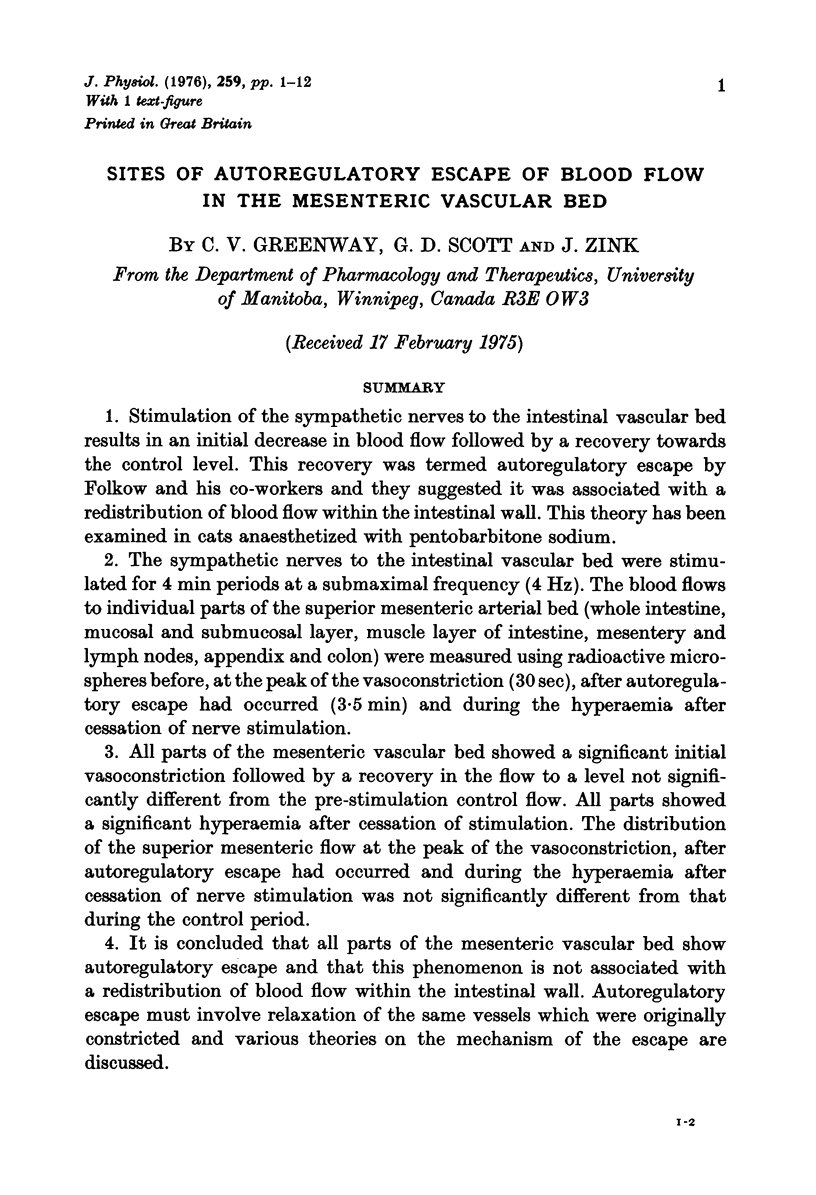

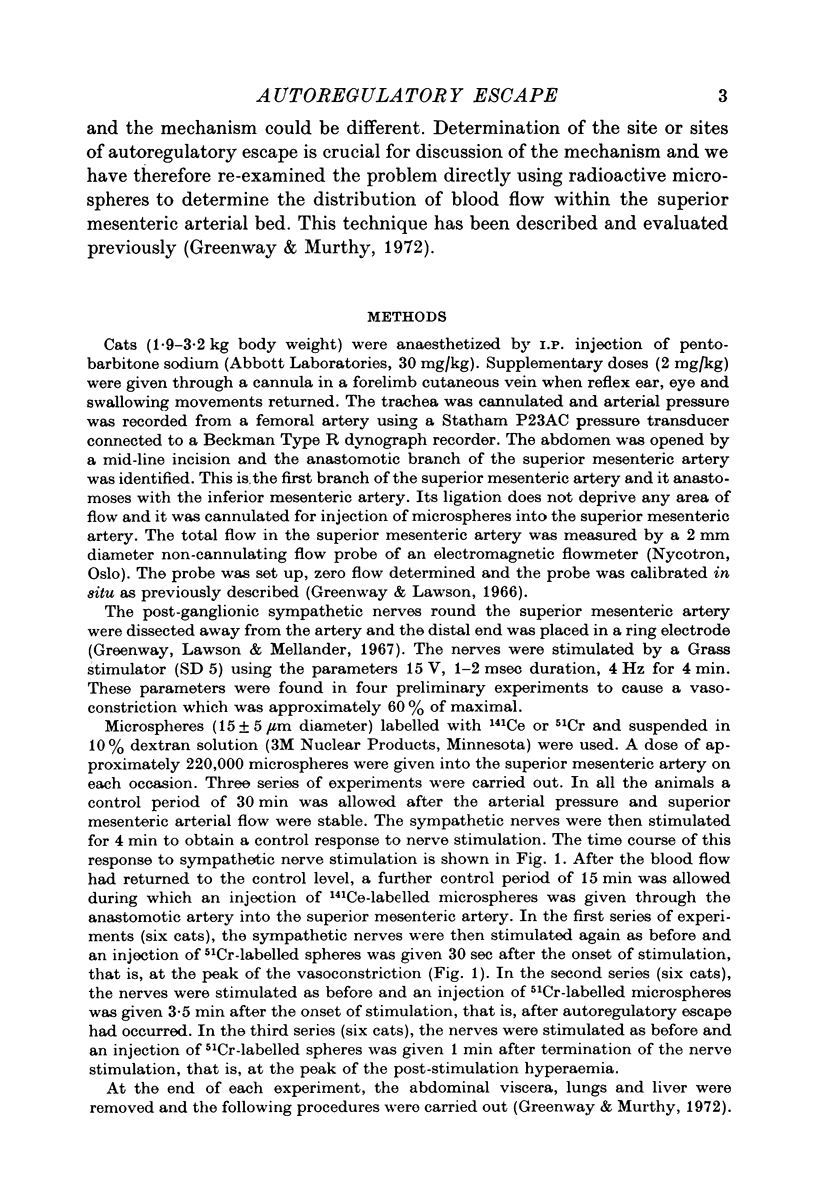
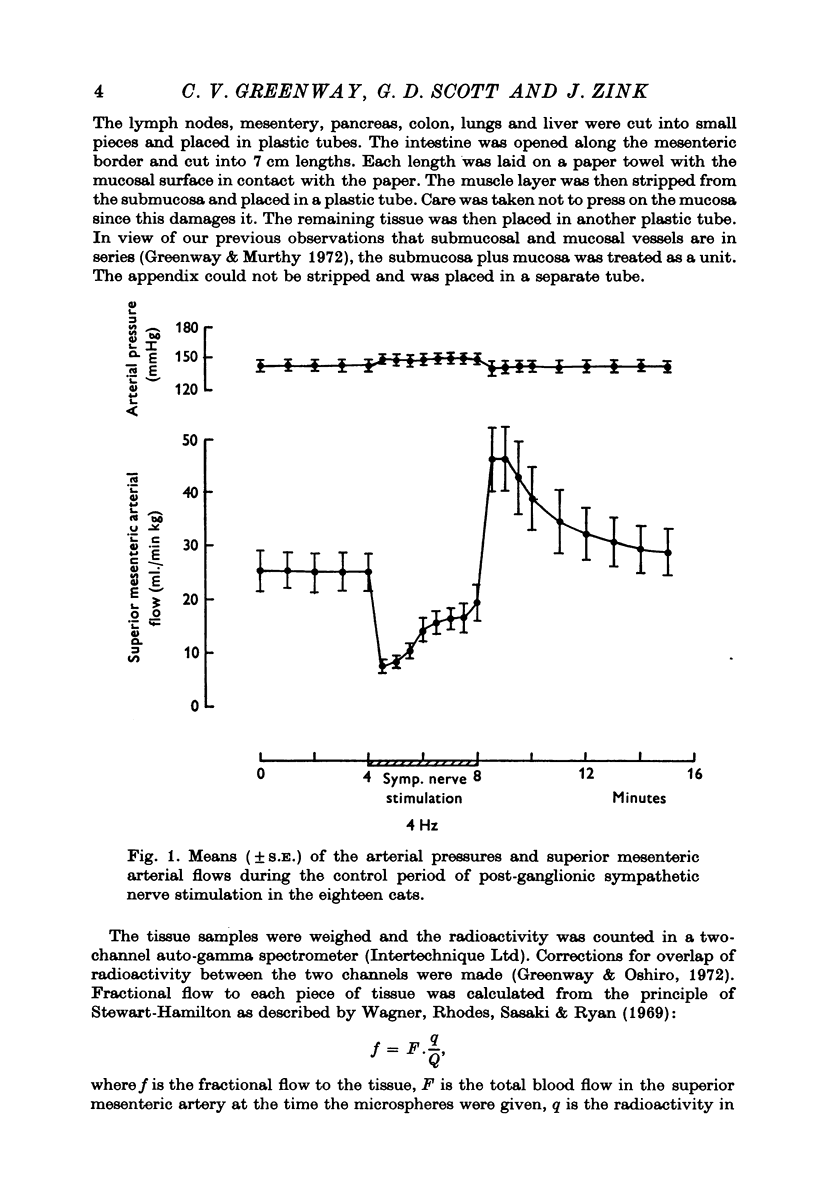
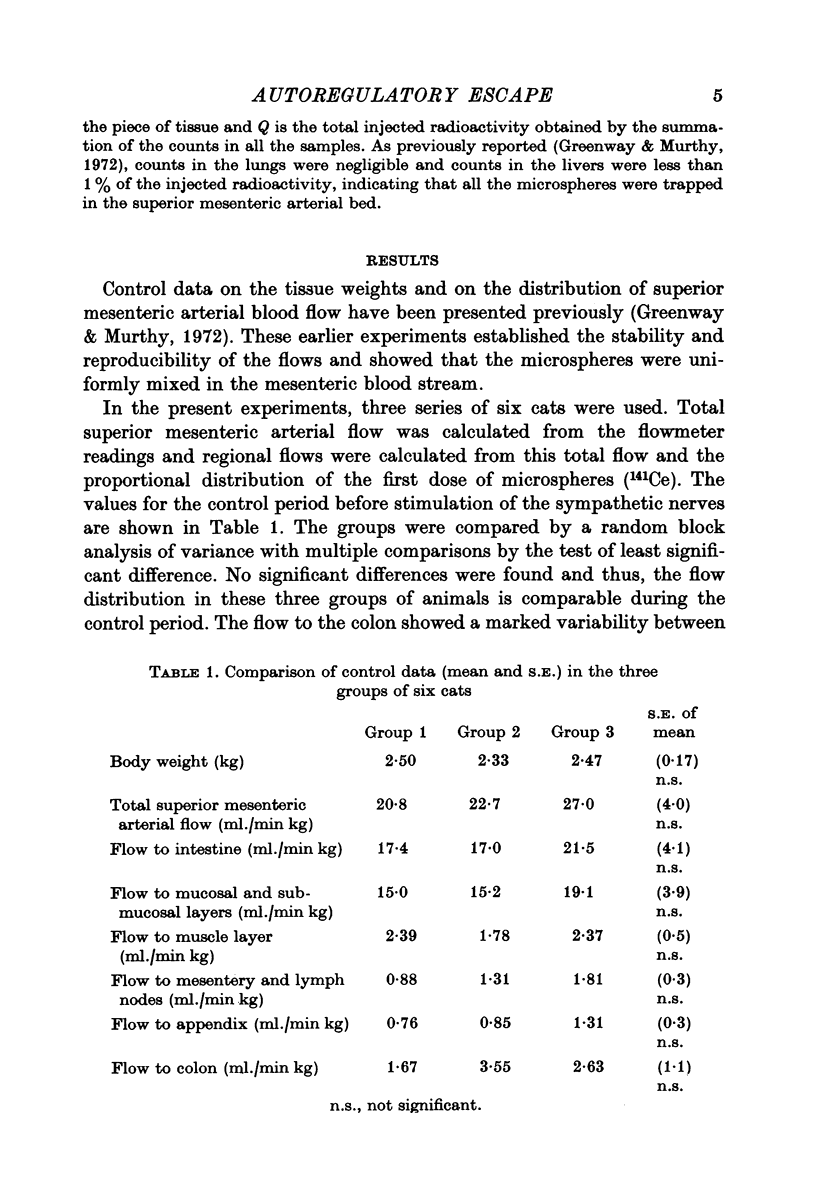
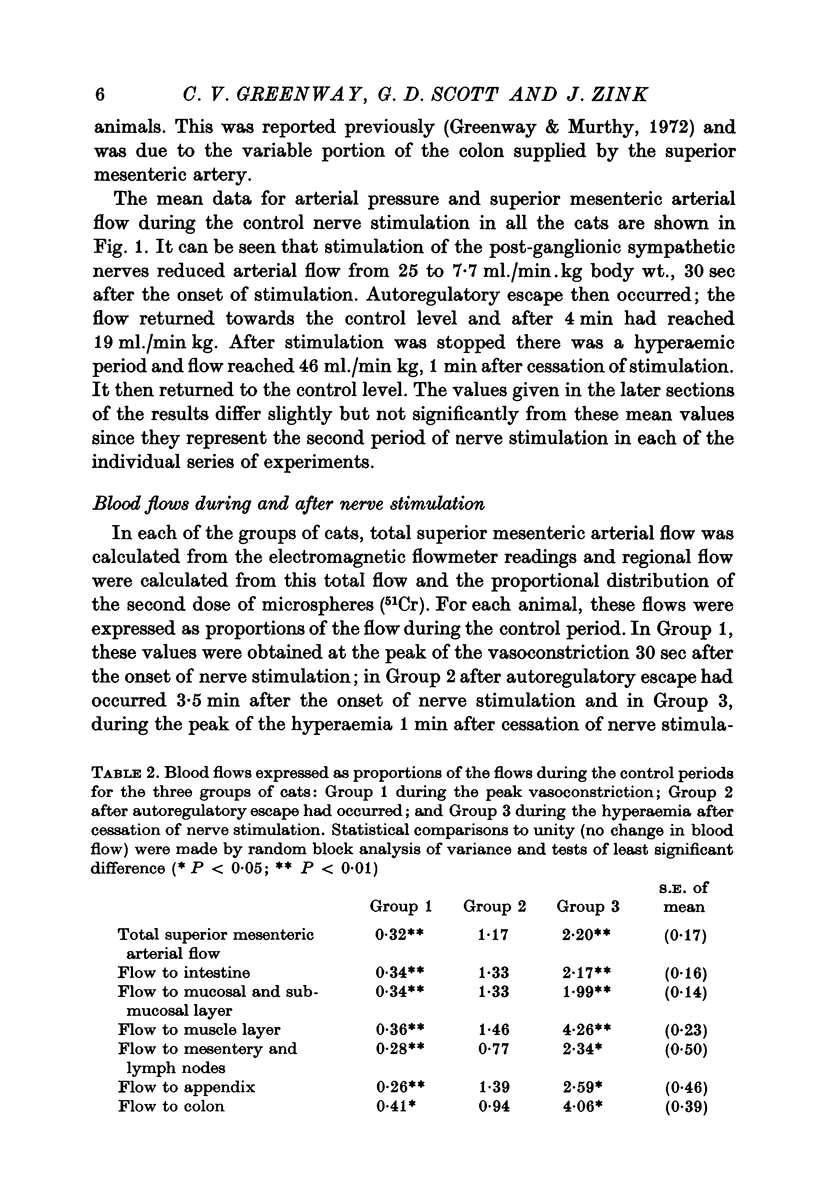
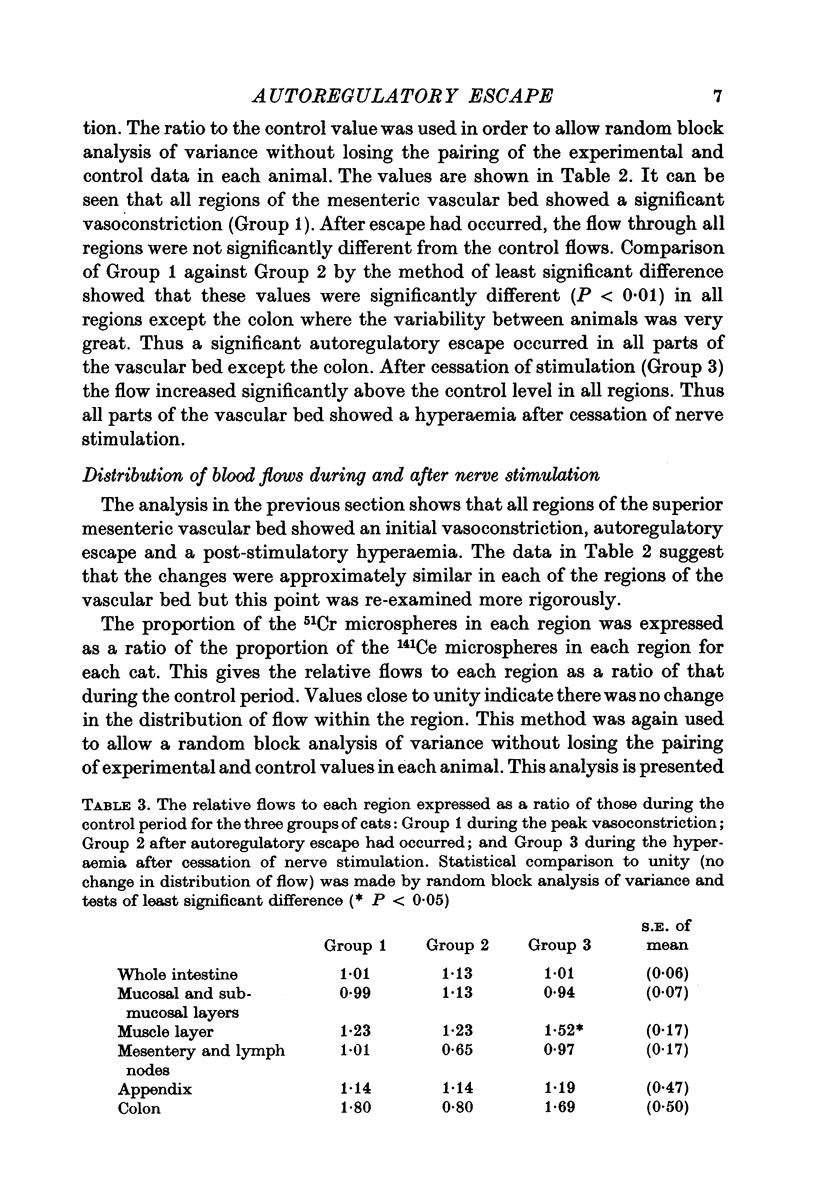
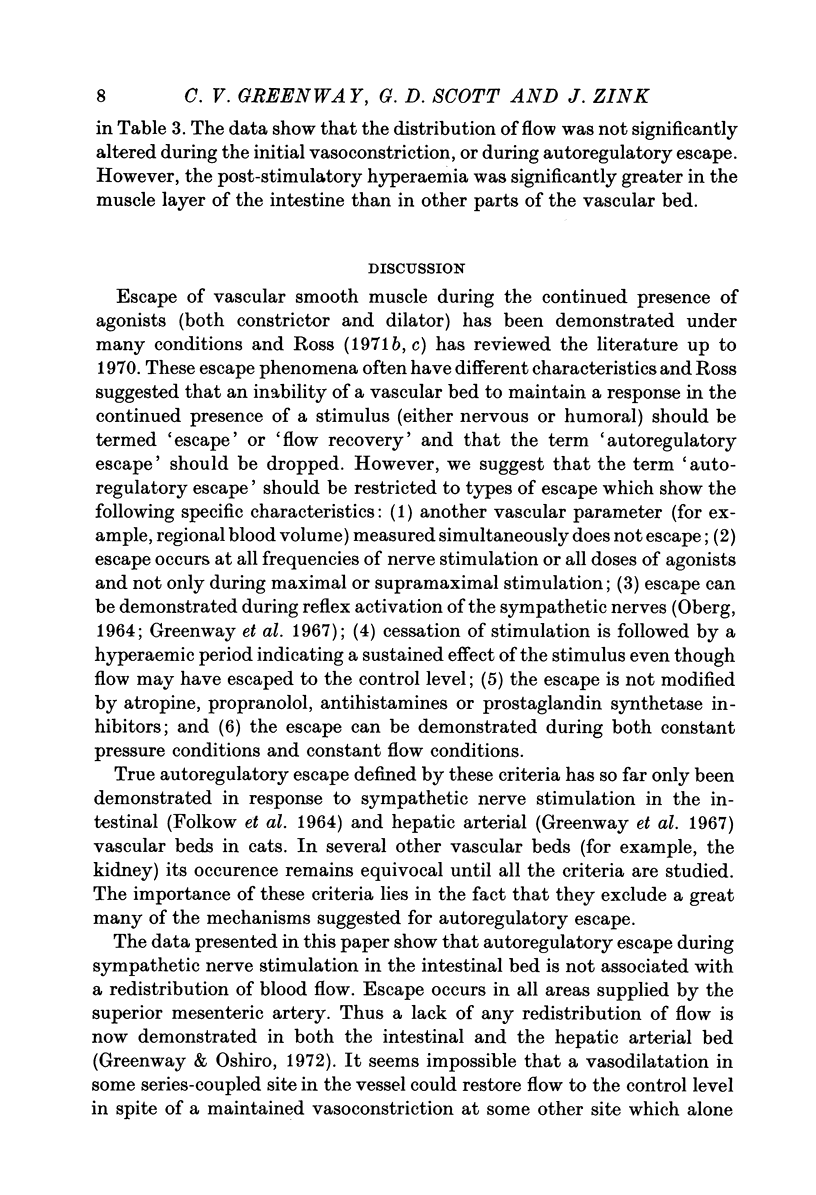
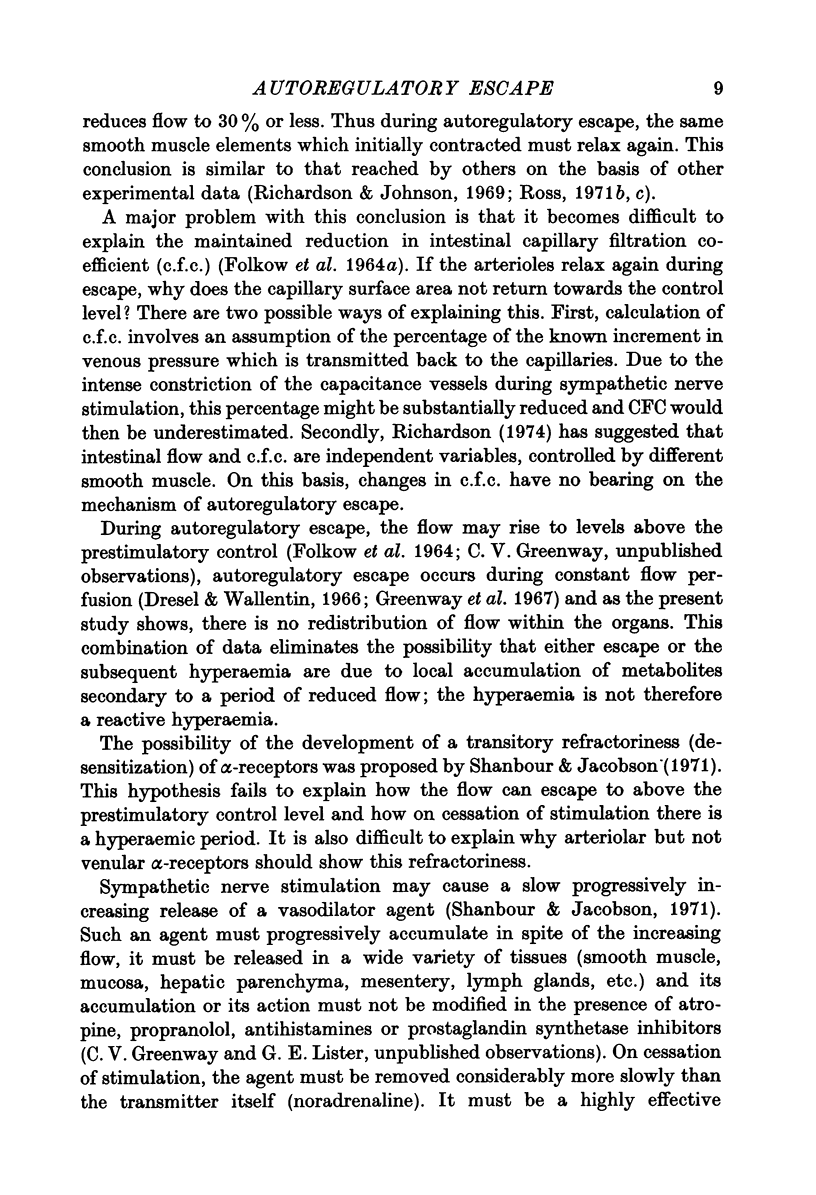
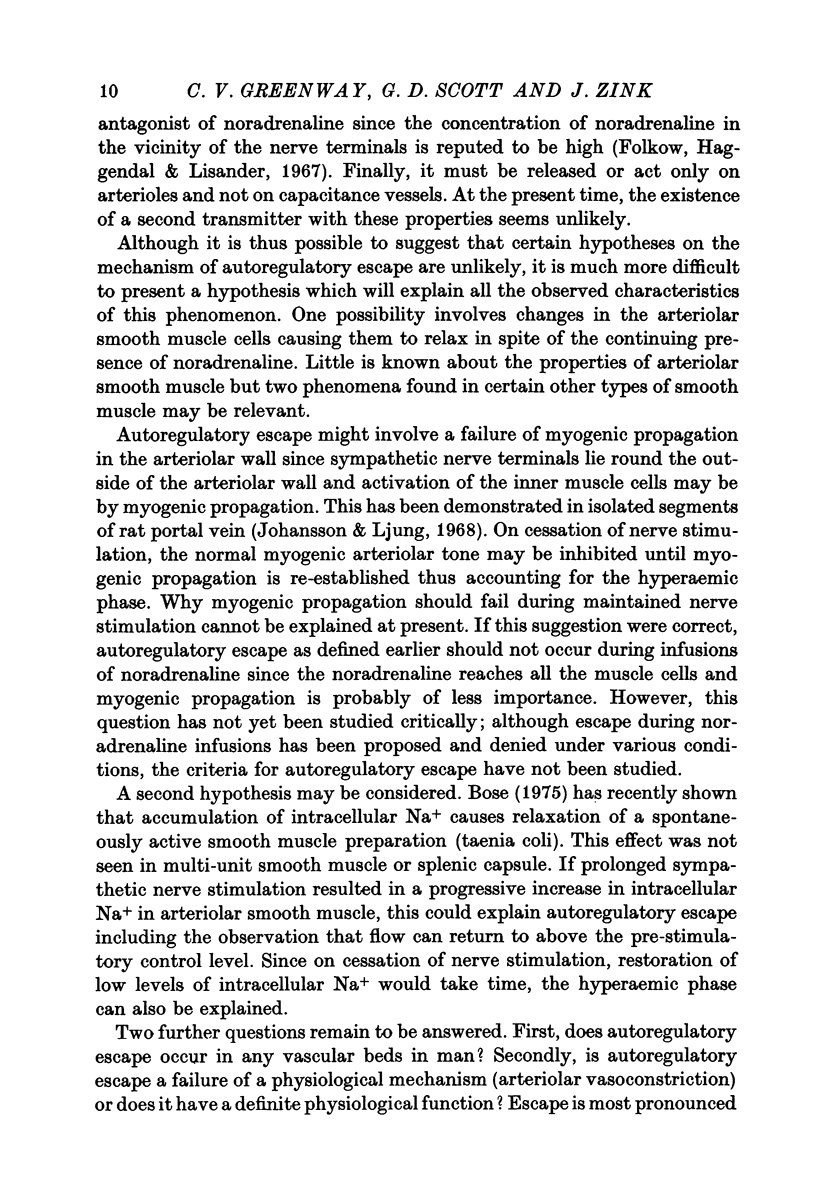

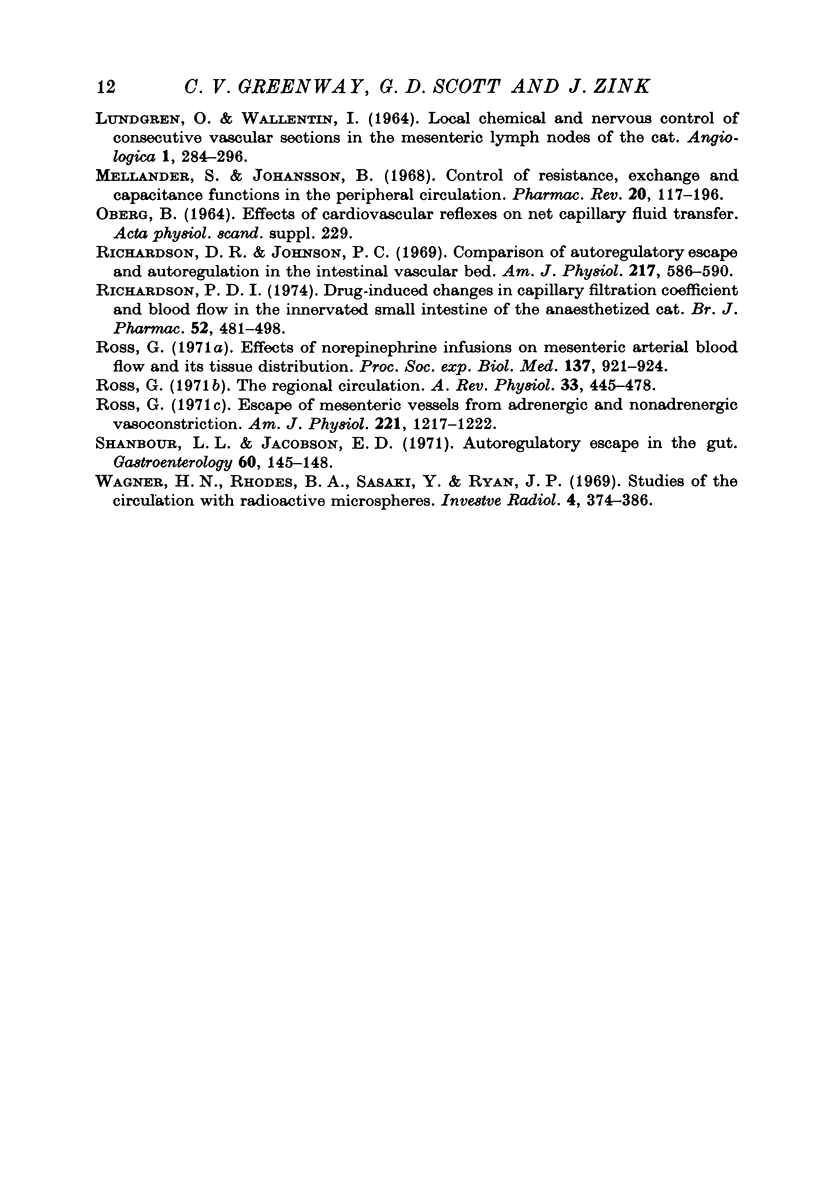
Selected References
These references are in PubMed. This may not be the complete list of references from this article.
- Bose D. Mechanism of mechanical inhibition of smooth muscle by ouabain. Br J Pharmacol. 1975 Sep;55(1):111–116. doi: 10.1111/j.1476-5381.1975.tb07618.x. [DOI] [PMC free article] [PubMed] [Google Scholar]
- Dresel P., Folkow B., Wallentin I. Rubidium clearance during neurogenic redistribution of intestinal blood flow. Acta Physiol Scand. 1966 Jun;67(2):173–184. doi: 10.1111/j.1748-1716.1966.tb03298.x. [DOI] [PubMed] [Google Scholar]
- Dresel P., Wallentin I. Effects of sympathetic vasoconstrictor fibres, noradrenaline and vasopressin on the intestinal vascular resistance during constant blood flow or blood pressure. Acta Physiol Scand. 1966 Apr;66(4):427–436. doi: 10.1111/j.1748-1716.1966.tb03220.x. [DOI] [PubMed] [Google Scholar]
- FOLKOW B., LEWIS D. H., LUNDGREN O., MELLANDER S., WALLENTIN I. THE EFFECT OF GRADED VASOCONSTRICTOR FIBRE STIMULATION ON THE INTESTINAL RESISTANCE AND CAPACITANCE VESSELS. Acta Physiol Scand. 1964 Aug;61:445–457. [PubMed] [Google Scholar]
- FOLKOW B., LEWIS D. H., LUNDGREN O., MELLANDER S., WALLENTIN I. THE EFFECT OF THE SYMPATHETIC VASOCONSTRICTOR FIBRES ON THE DISTRIBUTION OF CAPILLARY BLOOD FLOW IN THE INTESTINE. Acta Physiol Scand. 1964 Aug;61:458–466. [PubMed] [Google Scholar]
- Folkow B. Regional adjustments of intestinal blood flow. Gastroenterology. 1967 Feb;52(2):423–432. [PubMed] [Google Scholar]
- Greenway C. V., Lawson A. E., Mellander S. The effects of stimulation of the hepatic nerves, infusions of noradrenaline and occlusion of the carotid arteries on liver blood flow in the anaesthetized cat. J Physiol. 1967 Sep;192(1):21–41. doi: 10.1113/jphysiol.1967.sp008285. [DOI] [PMC free article] [PubMed] [Google Scholar]
- Greenway C. V., Lawson A. E. The effects of adrenaline and noradrenaline on venous return and regional blood flows in the anaesthetized cat with special reference to intestinal blood flow. J Physiol. 1966 Oct;186(3):579–595. doi: 10.1113/jphysiol.1966.sp008057. [DOI] [PMC free article] [PubMed] [Google Scholar]
- Greenway C. V., Murthy V. S. Effects of vasopressin and isoprenaline infusions on the distribution of blod flow in the intestine; criteria for the validity of microsphere studies. Br J Pharmacol. 1972 Oct;46(2):117–188. doi: 10.1111/j.1476-5381.1972.tb06863.x. [DOI] [PMC free article] [PubMed] [Google Scholar]
- Greenway C. V., Oshiro G. Comparison of the effects of hepatic nerve stimulation on arterial flow, distribution of arterial and portal flows and blood content in the livers of anaesthetized cats and dogs. J Physiol. 1972 Dec;227(2):487–501. doi: 10.1113/jphysiol.1972.sp010044. [DOI] [PMC free article] [PubMed] [Google Scholar]
- Johansson B., Ljung B. Role of myogenic propagation in vascular smooth muscle response to vasomotor nerve stimulation. Acta Physiol Scand. 1968 Aug;73(4):501–510. doi: 10.1111/j.1365-201x.1968.tb10889.x. [DOI] [PubMed] [Google Scholar]
- LUNDGREN O., WALLENTIN I. LOCAL CHEMICAL AND NERVOUS CONTROL OF CONSECUTIVE VASCULAR SECTIONS IN THE MESENTERIC LYMPH NODES OF THE CAT. Angiologica. 1964;1:284–296. doi: 10.1159/000157592. [DOI] [PubMed] [Google Scholar]
- Mellander S., Johansson B. Control of resistance, exchange, and capacitance functions in the peripheral circulation. Pharmacol Rev. 1968 Sep;20(3):117–196. [PubMed] [Google Scholar]
- Richardson D. R., Johnson P. C. Comparison of autoregulatory escape and autoregulation in the intestinal vascular bed. Am J Physiol. 1969 Aug;217(2):586–590. doi: 10.1152/ajplegacy.1969.217.2.586. [DOI] [PubMed] [Google Scholar]
- Richardson P. D. Drug-induced changes in capillary filtration coefficient and blood flow in the innervated small intestine of the anaesthetized cat. Br J Pharmacol. 1974 Dec;52(4):481–498. doi: 10.1111/j.1476-5381.1974.tb09716.x. [DOI] [PMC free article] [PubMed] [Google Scholar]
- Ross G. Effects of norepinephrine infusions on mesenteric arterial blood flow and its tissue distribution. Proc Soc Exp Biol Med. 1971 Jul;137(3):921–924. doi: 10.3181/00379727-137-35694. [DOI] [PubMed] [Google Scholar]
- Ross G. Escape of mesenteric vessels from adrenergic and nonadrenergic vasoconstriction. Am J Physiol. 1971 Nov;221(5):1217–1222. doi: 10.1152/ajplegacy.1971.221.5.1217. [DOI] [PubMed] [Google Scholar]
- Ross G. The regional circulation. Annu Rev Physiol. 1971;33:445–478. doi: 10.1146/annurev.ph.33.030171.002305. [DOI] [PubMed] [Google Scholar]
- Shanbour L. L., Jacobson E. D. Autoregulatory escape in the gut. Gastroenterology. 1971 Jan;60(1):145–148. [PubMed] [Google Scholar]
- Wagner H. N., Jr, Rhodes B. A., Sasaki Y., Ryan J. P. Studies of the circulation with radioactive microspheres. Invest Radiol. 1969 Nov-Dec;4(6):374–386. doi: 10.1097/00004424-196911000-00004. [DOI] [PubMed] [Google Scholar]


